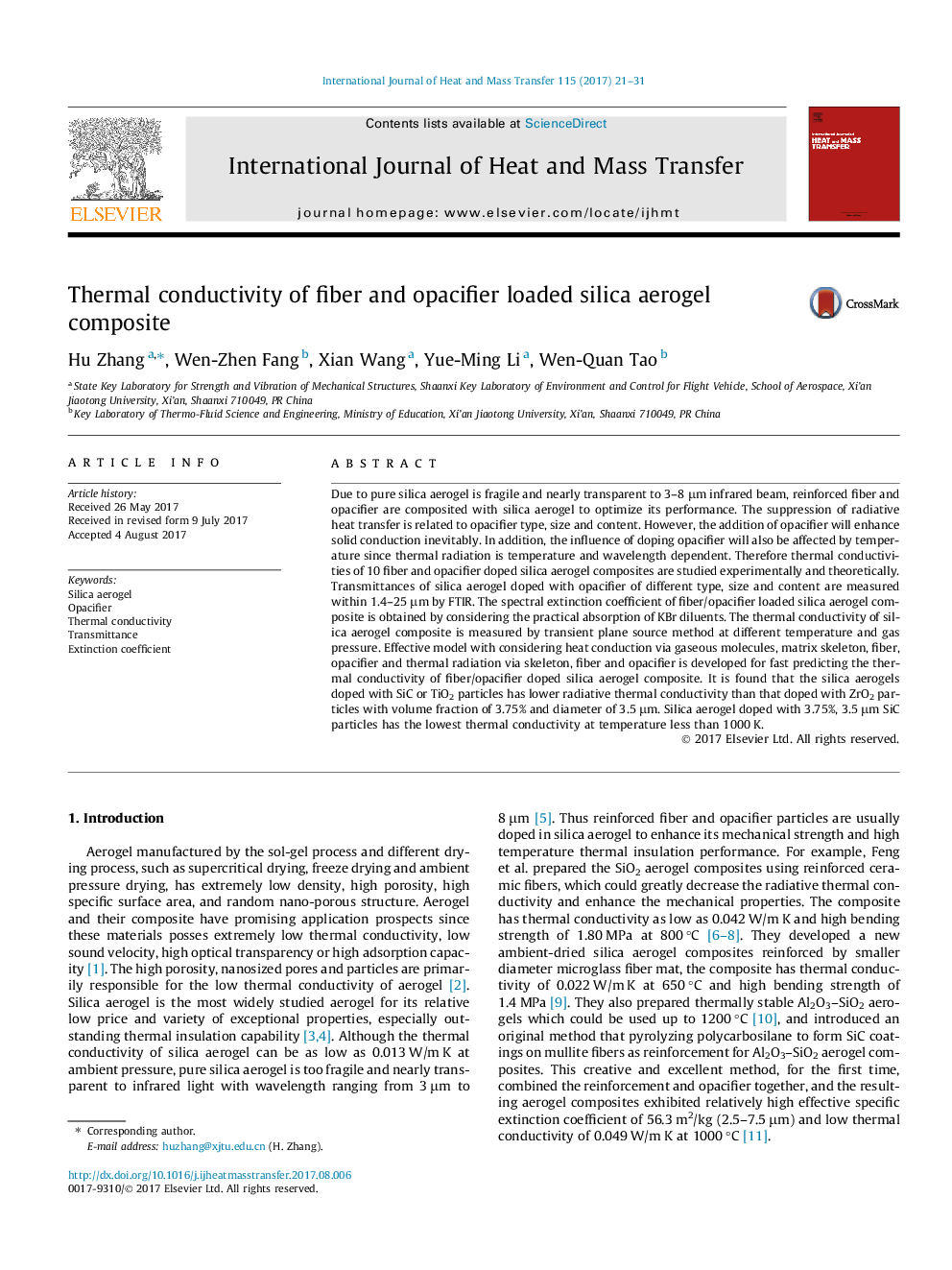| Article ID | Journal | Published Year | Pages | File Type |
|---|---|---|---|---|
| 4993949 | International Journal of Heat and Mass Transfer | 2017 | 11 Pages |
Abstract
Due to pure silica aerogel is fragile and nearly transparent to 3-8 μm infrared beam, reinforced fiber and opacifier are composited with silica aerogel to optimize its performance. The suppression of radiative heat transfer is related to opacifier type, size and content. However, the addition of opacifier will enhance solid conduction inevitably. In addition, the influence of doping opacifier will also be affected by temperature since thermal radiation is temperature and wavelength dependent. Therefore thermal conductivities of 10 fiber and opacifier doped silica aerogel composites are studied experimentally and theoretically. Transmittances of silica aerogel doped with opacifier of different type, size and content are measured within 1.4-25 μm by FTIR. The spectral extinction coefficient of fiber/opacifier loaded silica aerogel composite is obtained by considering the practical absorption of KBr diluents. The thermal conductivity of silica aerogel composite is measured by transient plane source method at different temperature and gas pressure. Effective model with considering heat conduction via gaseous molecules, matrix skeleton, fiber, opacifier and thermal radiation via skeleton, fiber and opacifier is developed for fast predicting the thermal conductivity of fiber/opacifier doped silica aerogel composite. It is found that the silica aerogels doped with SiC or TiO2 particles has lower radiative thermal conductivity than that doped with ZrO2 particles with volume fraction of 3.75% and diameter of 3.5 μm. Silica aerogel doped with 3.75%, 3.5 μm SiC particles has the lowest thermal conductivity at temperature less than 1000 K.
Related Topics
Physical Sciences and Engineering
Chemical Engineering
Fluid Flow and Transfer Processes
Authors
Hu Zhang, Wen-Zhen Fang, Xian Wang, Yue-Ming Li, Wen-Quan Tao,
